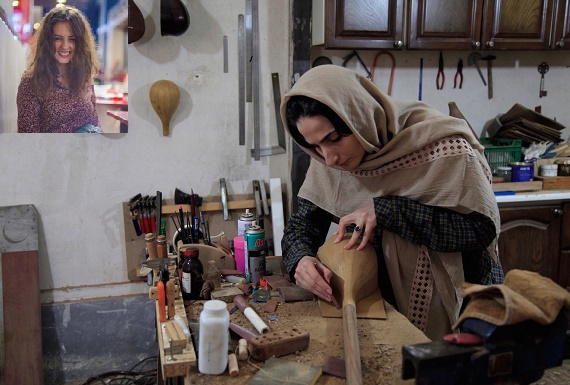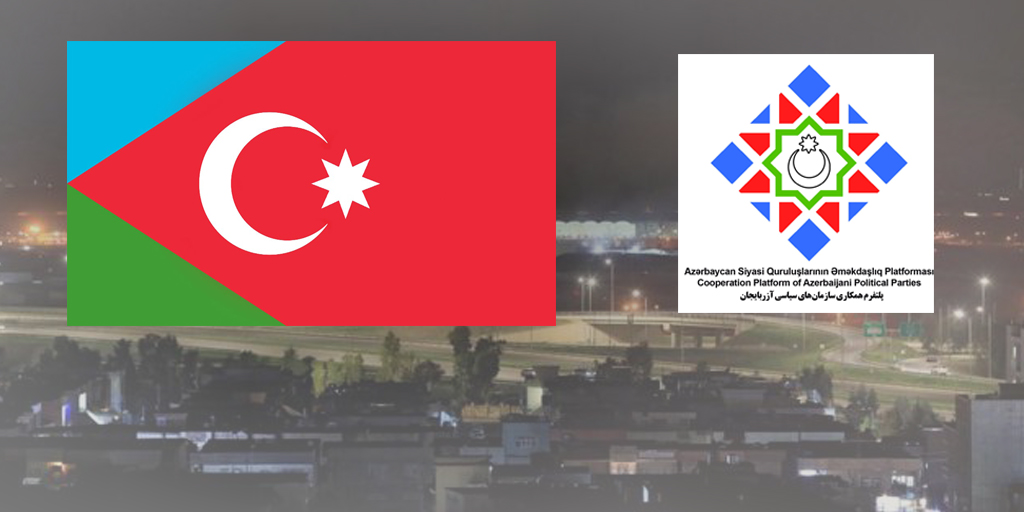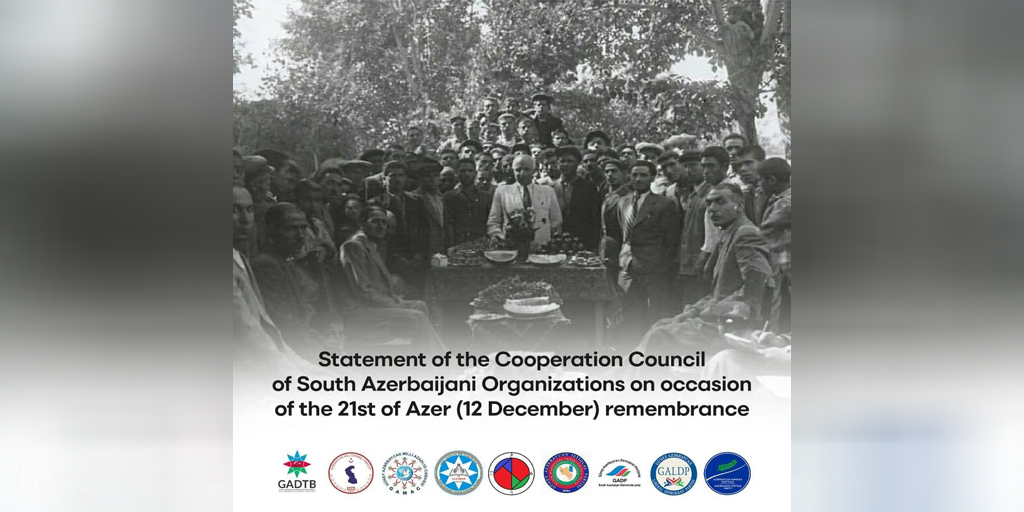Strength And Struggle Of South Azerbaijani Women In Iran By- Lala Aliyeva

As Tabriz is the heart of the Azerbaijani populated part of Iran, most passengers on the flight are ‘Azerbaijani Turks’, as they identify themselves in East Azerbaijan, Iran.
Almost none of the women wear headscarves. A young woman in her 20s boasts a short dress and transparent tights, attire that is not only banned in her country, Iran, but that could see her locked up or otherwise punished by the morality police. Suddenly, her mother catches on and asks whether she is going to fly home in this dress. Desperately, she starts to think of what to do. Someone proposes covering her legs with her headscarf, but anyway, without being covered from top to toe, it will be impossible for her to leave the plane. There are only 20 minutes left until the flight. Hurriedly, she approaches every woman in the hall asking for clothes. Finally, someone lends her a pair of trousers.
When the plane lands in Tabriz Airport, all the female passengers dig out their headscarves from their bags and gently place them over their heads.
Women in Tabriz challenge stereotypes inside and outside of the country on a daily basis. But not as the western media usually portrays Iran, showing women in black chadors being disrespected by a “male dominated society”. Women in Iran are active and play a significant role in social and political life.
Numbering in the millions, Iranian Azerbaijanis are the second largest ethnic group, after Persians, in Iran. Tabriz, which is mostly populated by Iranian Azerbaijanis, is one of the country’s historical capitals and the biggest economic hub of Iran’s South Azerbaijan Province. It is the cultural capital of Iran’s Azerbaijanis, and you can often hear from locals that Tabriz is also a “political capital”. During the rule of the Pahlavi Dynasty in Iran (1925–1979), Azerbaijani minorities were prohibited from using Azerbaijani language in education, which continued under the Islamic Republic of Iran. Azerbaijanis often face persecution, even execution by hanging, for attempting to revive their identity, participate in peaceful demonstrations, or spread Azerbaijani culture. But all this pushes ethnic Azerbaijani women to be even more active in their region.
Twenty-nine-year-old Nazile Cavadbeyli, is a woman activist who has struggled for the right to use Azerbaijani in schools and has opened various libraries both in Persian and Azerbaijani languages in several villages. She is also the author of several children’s books and was the editor of Sedaqet (Faithfulness) magazine, which used to write about the past, present, and future of Turks in Iran. Due to “financial problems” the journal had to shut down. Cavadbeyli writes mostly in her mother tongue to give children the opportunity to read books in their own language. Almost all of her books were published in either Turkey or Baku.
In Iran, women’s fundamental rights are denied to them by the law; women don’t have the right to run for president, become judges, simply leave the country without the permission of their father of husband, or to have equal rights to inheritance with their brothers — when a father dies, his sons are entitled to twice as much as his daughters. Being an active Azerbaijani woman in the Azerbaijani part of Iran leads to pressure on two fronts. First for being an active woman, and secondly for being of Azerbaijani ethnicity.
The author of eight books and one of the first feminist activists and writers in Tabriz, Faranak Farid, 55, has been engaged in an active social life for 40 years. Five years ago, she was imprisoned for demonstrating against the artificial shrinking of Urmia Lake, and spent around 45 days in prison.
“They imprisoned me for Urmia lake, but this arrest was not related only to my participation in this demonstration, they knew about all my activities regarding our mother language and feminism. It was a pure Azerbaijani movement,” recalls Farid, who was beaten in prison.
Farid is the first feminist woman in Tabriz who has worked on both women’s and Azerbaijani issues at the same time. She says that centralization is a big problem in Iran, “active women who move to Tehran mostly work on women’s rights, and forget about their ethnicity and other problems”.
“After the Islamic Revolution ‘the return to our ethnicity’ turned into a big movement here. But most women are involved either in ethnic issues, or defending women’s rights. They cannot do both,” she says.
In comparison with the recent past, when women were mostly deprived of an education, today many families want their daughters to study and be active.
“Here women are more active than men, more writers are women. Historically, women in Tabriz were very active, and currently, almost every woman wants to have and continue her education. In the past it was the opposite,” says Cavadbeyli, whose 23-year-old sister-in-law, raised along with six sisters, was deprived of an education by her father. Cavadbeyli’s mother, 64-year-old Zarifa Bazmi, was raised in the village of Parkharan where she did not even attend the madrasa, an elementary school.
“At that time, girls were restricted from studying. I don’t understand or speak Persian, but I wanted my children to be educated,” says Zarifa Bazmi, who is mother to 10 children and grandmother to 10 grandchildren. Zarifa married at the age of 15.
Marrying young does not stop women from being active members of society.
Take Adile Tahmasibi. The 61-year-old born and raised in Ehesh city got engaged at nine and married at 13. Together with her husband, she started to hike in the local mountains. Later, Adile became a famous hiker, who in 1986 founded an organization for women hikers in Tabriz. From all around Iran, she gathered women to visit the highest peaks in Iran.
“Along with around 1,200 women from all around Iran, we began to hike in the mountains. I wanted them to increase their self-confidence. I wanted them to understand that not only men, but also women without men, can hike, to stand on their own two feet,” says Tahmasibi, whose activities include not only hiking, but also providing workshops for women in handicrafts , to teach them to be financially independent. Adile was one of the first women in Tabriz to celebrate March 8, International Women’s Day. She invited other active women to her home and they read poems and discussed women’s rights and restrictive laws.
Officials have attempted many times to stop her activity, when they found out about the underground celebrations of March 8, she was questioned and warned to stop.
“I did not want anybody to have problems or be beaten, so I decided to stop celebrating it at my home, but of course the next year, I heard that women celebrated March 8 in other homes,” she recalls.
Officials even tried to stop her hiking activity when they found out that one woman took off her chadra (headscarf) while hiking; they made her stop for nine months.
The chadra does not restrict Tabrizian women from playing an enormous role in their oppressed society. For some women, it is a symbolic headscarf that their government forces them to wear, for others, it is a part of their culture that has turned into a daily habit. However, in both instances, it cannot prevent women from doing what they think they should do.
Nazile’s mother, 64-year-old Zarifa Bazmi, sits at home in her black floral chadra, even among women. “I don’t feel comfortable without it. Even when I was in Baku, my son asked me to take it off, but I could not, because it is already a habit,” she remembers.
For her daughter Nazile, the headscarf is part of her culture.
“Whenever I travel outside of Iran, I still cover my head with the headscarf, I was raised this way; it is my choice and I feel comfortable. For me, freedom is in my mind and thoughts,” she says.
Not everyone agrees. The headscarf is certainly not a choice for writer and director Leila Noorozi.
“Yes, when I travel outside of Iran I immediately take it off, because it is not my choice,” explains the 27-year-old from Ardebil. “I would like to decide for myself whether or not to wear it, but they force us to, it is not my personal choice. I won’t say that it restricts me from doing my job, not at all, but this is a matter of free will and decision making.”
Along with Telegram, Instagram is one of the most popular social media tools in Iran, and Leili Noroozi has a lot of followers. When she published a photo of herself without a headscarf, Leili received a great deal of criticism. “Especially women, women are very critical here. Their reaction was very negative, as if I wanted to show myself off. But why should I sacrifice my choice for the sake of men, just to prevent men from sinning,” expresses Leila, “They say men will look at you and will give themselves up.”
I spent just a week in Tabriz, but left with speculations about how controversial we view Iran, and how the worldwide media exaggerates its conservatism.
Tabriz International Airport.
The Tabriz-Istanbul flight. As soon as the plane takes off, headscarves fall. For many, this means freedom at last. The next day, while in Istanbul, I touched my head at least three times as if I was covered by a headscarf that needed always to be checked.

Outside and Inside Iran. “Outside of Iran I never wear the headscarf, so you can take my photo without it,” 55 year old Ferenak Farid, the first woman feminist writer in Tabriz, who manages to work on both women’s and Azerbaijani issues. In 2008, all around Iran, active women started a campaign, “One million signatures for the repeal of discriminatory laws.”
Ferenak Farid, author of three books, joined this campaign together with other women in Tabriz. Women were attacked and jailed, but the petition received widespread international recognition. Five years ago, she was imprisoned for her activities and participation in demonstrations against the artificial shrinking of Urmia lake, spending around 45 days in prison.

A mountain hiker, Adile Tahmasibi, 61, started her activity after marrying at the age of 13. Together with her husband, she started to hike in the local mountains, later becoming a famous hiker who in 1986 founded an organization for women hikers in Tabriz. She has gathered women from all around Iran to visit the highest peaks in the country, to increase their self-confidence.

Mehri Jaberian is the first woman not only in Tabriz, but also in Iran, to manufacture national instruments like the saz, tar, and tambur. Born in 1981 in Tabriz, Mehri graduated from Tabriz State University’s Faculty of Psychology. She was an actress on film and in theatre. Moreover, she writes for local newspapers and magazines and is a photographer. She says people are surprised to see her running around for iron or wood, or producing instruments, as they consider this to be a man’s job. “

Leili Noorozi, 27, a young director and writer from Ardebil. “When I travel outside of Iran I immediately take it off, because it is not my choice. I would like to decide for myself whether or not to wear it, but force us to, it is not my personal choice. I won’t say that it restricts me from doing my job, not at all, but this is a matter of free will and decision making.”


“I am doing it for my nation, for my land, and for the joy of it. I chose it. I did not marry, I could not find a proper husband. If I had been married, I would have to stop dancing, because my future husband would probably not let me dance. So now I am relaxed.”
She teaches dance in three different spots in Tabriz, and several times a week she goes outside of the city to remote villages to teach there. Munur teaches covertly. “They relate Azerbaijani dances with politics, they don’t want us to spread Azerbaijani culture,” she says.
She rents a parking spot outside one house, and there are no signs of any school there.






























